Picture this: you're standing at the firing range, holding a firearm in your hands. The weight, the power, the responsibility—it all rests in your grasp. But do you truly feel confident in your ability to handle it safely?
That's where Practical Lessons in Firearm Safety Training comes in. This course offers a comprehensive and accessible approach to firearm safety, covering everything from proper handling and storage to recognizing potential hazards.
Whether you're a new owner or looking to refresh your knowledge, this course will equip you with the skills and knowledge you need to be a responsible firearm owner.
So, why wait? Take the first step towards mastering firearm safety and unlock a world of confidence and peace of mind.
Key Takeaways
- Treat every firearm as if it's loaded
- Keep the muzzle pointed in a safe direction
- Keep your finger off the trigger until you're ready to shoot
- Familiarize yourself with the specific firearm you're using and its safety features
Basic Firearm Safety Principles
To ensure the safe handling and use of firearms, it's imperative to follow basic firearm safety principles at all times. By adhering to these principles, you can minimize the risk of accidents and promote a culture of responsible gun ownership.
Always treat every firearm as if it's loaded, regardless of whether you believe it to be unloaded. This mindset will help prevent any careless mistakes that could lead to tragic consequences.
Additionally, keep the muzzle pointed in a safe direction, away from yourself and others. Accidental discharges can happen, so it's crucial to never point the firearm at anything you aren't willing to destroy.
Another fundamental principle is to keep your finger off the trigger until you're ready to shoot. This simple rule ensures that you maintain control over the firearm and avoid unintentional firing.
Furthermore, it's essential to be fully aware of your target and what lies beyond it. This knowledge allows you to make informed decisions and avoid any collateral damage.
By familiarizing yourself with the specific firearm you're using, including its operation and safety features, you can handle it safely and effectively.
Additionally, proper storage procedures are vital to prevent unauthorized access and accidents. Store firearms securely, unloaded, and locked away, with ammunition stored separately. This ensures that only authorized individuals can access and use the firearms.
Finally, seeking professional training and education in firearm safety and handling is crucial. Enrolling in a gun safety course or obtaining proper shooting education will equip you with the necessary skills and knowledge to handle firearms responsibly.
Understanding State and Federal Firearm Laws
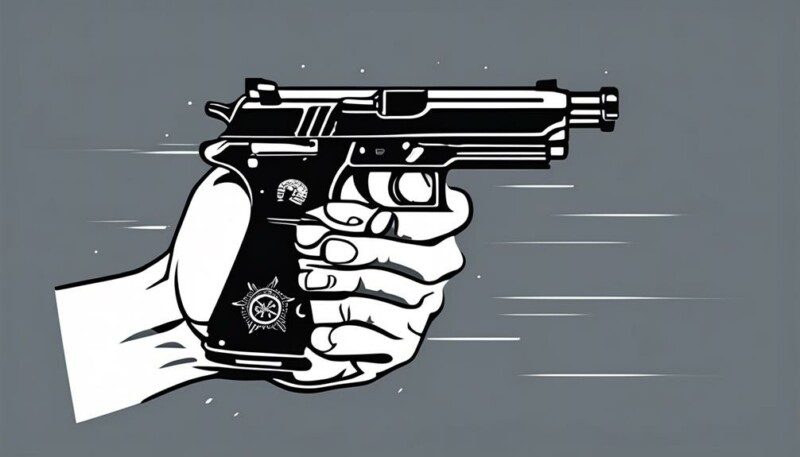
Now it's time to familiarize yourself with the legal requirements for firearms and the regulations set by both federal and state governments. Understanding these laws is crucial for responsible firearm ownership.
Federal firearm regulations cover a wide range of areas, including background checks, prohibited persons, and the purchase and transfer of firearms.
Additionally, each state has its own set of firearm legislation that you must be aware of to ensure compliance and avoid legal consequences.
Legal Requirements for Firearms
Understanding the legal requirements for firearms is crucial for anyone who owns or is considering owning a firearm. To ensure safe and responsible ownership, it's important to be aware of the following:
- Familiarize yourself with state and federal firearm laws: Both sets of regulations may include background checks, waiting periods, and firearm registration. It's essential to understand these laws to stay compliant.
- Additional state laws: Some states have additional laws regarding concealed carry permits and restrictions on where firearms can be carried. Knowing these laws will help you avoid legal issues.
- Legal use of force and self-defense laws: Understanding the laws surrounding self-defense, including the duty to retreat, is crucial in different states. Being knowledgeable about the legal boundaries will help you act responsibly in any situation.
- Restrictions on firearms and ammunition: Different states may have restrictions on the type of firearms, magazine capacity, and ammunition allowed. Know your state's regulations to ensure you're in compliance.
To fully understand the legal requirements for firearms, consider taking certified courses offered by organizations such as the NRA or your state's Department of Public Safety. These courses provide comprehensive firearm safety training, ensuring you're well-informed and responsible as a firearm owner.
Federal Firearm Regulations
Once you're familiar with the legal requirements for firearms, it's essential to understand the Federal Firearm Regulations that govern both state and federal laws.
These regulations are crucial for firearm safety training and ensuring responsible shooters. The National Rifle Association (NRA) offers certified courses and education programs to promote safe handling and proper firearm education.
By staying informed about federal and state firearm laws, you can ensure compliance with all relevant regulations.
It's important to know where you can and can't carry a firearm, respecting the specific regulations of each location. Differentiating between concealed and open carry is also essential, as each has its own legal implications and requirements.
Online, court-ordered firearm safety courses are available, but it's vital to ensure they meet the necessary legal standards.
Understanding and adhering to federal firearm regulations is key to becoming a responsible and knowledgeable firearm owner.
State Firearm Legislation
To ensure compliance and responsible gun ownership, it's crucial to have a thorough understanding of state and federal firearm laws. Here are four key facts to keep in mind regarding state firearm legislation:
- State Laws Vary: Each state has its own set of firearm laws and regulations. It's important to familiarize yourself with the specific laws in your state to ensure you're in compliance.
- Federal Laws Apply Nationwide: In addition to state laws, federal firearm laws apply across the entire United States. These regulations cover areas such as background checks, firearm transfers, and prohibited persons.
- Legal Requirements Differ: The requirements for carrying, owning, and using firearms can differ significantly from state to state. Understanding these differences is crucial for staying within the bounds of the law.
- Stay Updated: State and federal firearm legislation can change over time. It's important for gun owners to stay informed about any updates or changes that may affect their rights and responsibilities.
Proper Handling and Storage of Firearms
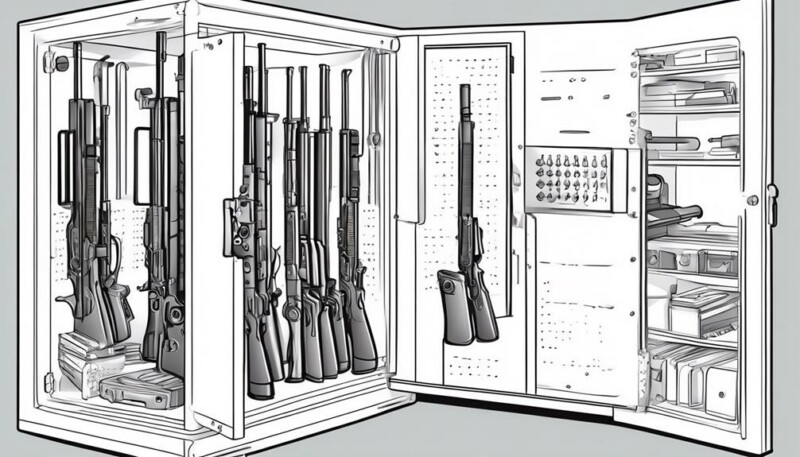
When it comes to the proper handling of firearms, there are certain techniques that you must follow to ensure your safety and the safety of those around you.
This includes always keeping the muzzle pointed in a safe direction, keeping your finger off the trigger until you're ready to shoot, and treating every firearm as if it's loaded.
Additionally, it's crucial to store your firearms securely by using a locked cabinet, safe, or gun lock to prevent unauthorized access and accidents.
Handling Techniques
Properly handling and storing firearms is essential for ensuring the safety of everyone involved. The Training Department provides certified instructors who are experts in firearms safety. Their courses are designed to equip you with the necessary skills and knowledge to handle firearms responsibly.
Here are four key handling techniques that you'll learn in these courses:
- Always treat every firearm as if it's loaded, even if you believe it to be unloaded. This mindset promotes safe handling practices at all times.
- Keep your finger off the trigger until you're ready to shoot. This helps minimize the risk of accidental discharge.
- Point the muzzle in a safe direction, away from yourself and others. This ensures that even if the firearm were to discharge, it wouldn't cause harm.
- Be aware of your surroundings and know what's behind your target. This helps prevent unintended injuries or property damage.
Storage Guidelines
Securely storing firearms is crucial for maintaining their safety and preventing unauthorized access. The NRAs Firearm Training and Education Program emphasizes the importance of responsible gun ownership, which includes following proper storage guidelines. Here are some key storage guidelines to consider:
| Guidelines | |
|---|---|
| Always store firearms unloaded | |
| Use a secure container, such as a gun safe or lock box | |
| Store ammunition separately in a locked container | |
| Consider using trigger locks or cable locks | |
| Store firearms in an inaccessible location |
Developing Safe Shooting Techniques
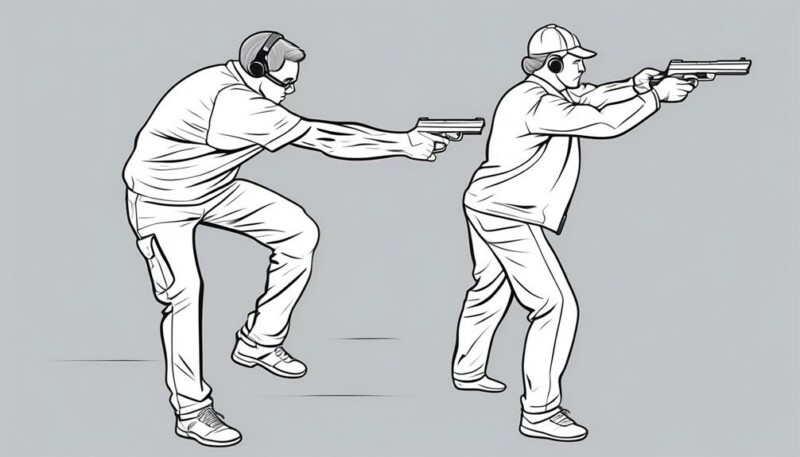
To develop safe shooting techniques, always ensure that the firearm is pointed in a safe direction and keep your finger off the trigger until you're ready to shoot. Here are four important tips to keep in mind when developing your shooting skills:
- Be aware of your target and what's beyond it: Before you take aim, make sure you have a clear understanding of what you're shooting at and what lies beyond it. This will help prevent accidents and ensure the safety of others around you.
- Understand the proper handling and operation of your specific firearm: Each firearm is different, so it's crucial to familiarize yourself with the specific handling and operation instructions for your firearm. This includes knowing how to load, unload, and safely engage the safety mechanism.
- Always use appropriate eye and ear protection when shooting: Protecting your eyes and ears is essential while shooting. Wearing safety glasses or goggles and using earplugs or earmuffs can help prevent injuries and reduce the risk of hearing damage.
- Practice regularly at a safe shooting range or course: Regular practice is key to improving your marksmanship qualification and honing your shooting skills. Utilize safe shooting ranges or enroll in firearm safety training programs to receive expert guidance and instruction.
Recognizing and Avoiding Potential Hazards
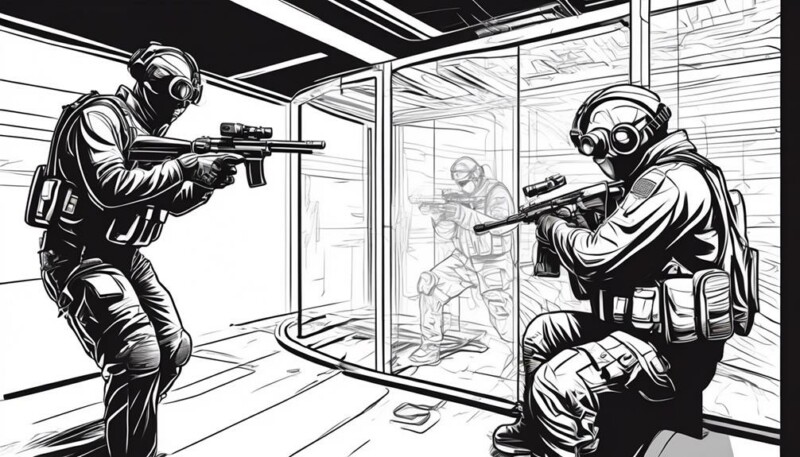
When it comes to firearm safety, it's crucial to be able to recognize and avoid potential hazards. The Department of Firearm Safety offers a variety of programs and courses available to educate individuals on safe gun ownership and practical lessons in firearm safety training.
One of the most important lessons is to always treat every firearm as if it's loaded, even if you believe it's not. This mindset helps to prevent accidents and promotes a safe environment. Additionally, keeping the firearm pointed in a safe direction at all times, away from yourself and others, is essential. By being aware of your surroundings and ensuring there's a safe backstop before firing, you can minimize the risk of unintended harm.
Engaging the safety mechanism on the firearm when it isn't in use further enhances safety measures. Lastly, it's crucial to keep firearms and ammunition securely locked and stored separately when not in use. By following these guidelines, you can recognize and avoid potential hazards, promoting a safe and responsible approach to firearm ownership.
Emergency Response and First Aid in Firearm-Related Incidents
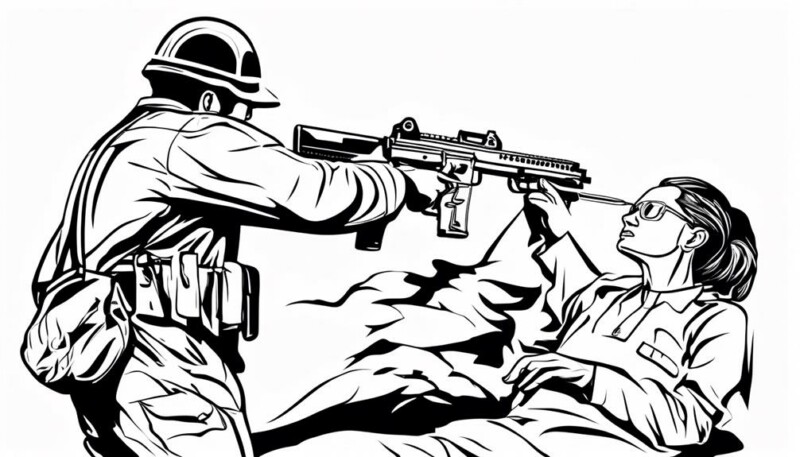
To effectively respond to firearm-related incidents, it's crucial to possess the knowledge and skills required for emergency response and first aid. The Department provides a variety of programs designed to provide individuals with the necessary training to handle such situations. These Instructor Led courses are designed to develop safe and effective emergency response techniques.
Here are four key points to remember when responding to firearm-related incidents:
- Prioritize safety: In any firearm emergency, the first step is to ensure your safety and the safety of others. Immediately call for professional medical assistance before taking any further action.
- Secure the scene: Before providing first aid, make sure the area is secure and safe for both the victim and yourself. Remove any potential hazards or threats, such as firearms or dangerous objects.
- Utilize basic first aid techniques: Understanding basic first aid techniques is essential in firearm-related incidents. Learn how to apply pressure to stop bleeding, perform CPR, and stabilize an injured person until professional medical help arrives.
- Use available resources: Take advantage of available resources such as tourniquets and trauma kits to address gunshot wounds and other injuries. These resources can help provide immediate care and increase the chances of survival.
Continued Education and Training for Firearm Safety

Continuing education and training are essential for maintaining proficiency in firearm safety. It's crucial to stay updated on the latest safety protocols, laws, and techniques to ensure the responsible and safe use of firearms. The National Rifle Association (NRA) offers a wide range of courses and resources that can help you enhance your firearm safety knowledge.
Whether you're a beginner or an experienced shooter, the NRA provides information about their courses, License to Carry, rifle training, and shooting sports. These courses are available to individuals of all skill levels and cover topics such as firearm handling, marksmanship, and personal protection.
By enrolling in these courses, you can gain valuable insights into firearm safety, improve your shooting skills, and stay informed about the latest developments in the field. It's important to note that the information provided by the NRA shouldn't be reproduced for commercial purposes without their permission.
To ensure the safety of yourself and others, it's highly recommended to complete this course and regularly update your knowledge and skills in firearm safety.
Frequently Asked Questions
What Are the 4 Points of Firearm Safety?
The 4 points of firearm safety are important for ensuring the safe handling and use of firearms.
Always treat every firearm as if it's loaded.
Never point it at anything you don't want to destroy.
Keep your finger off the trigger until you're ready to shoot.
Be sure of your target and what's behind it.
Understanding and following these basic rules, along with proper education and training, can help prevent accidents and promote responsible gun ownership.
Which of the Following Are Best Practices for Firearm Safety?
To ensure firearm safety, it's crucial to follow best practices.
First, store firearms properly in a secure spot, away from unauthorized individuals.
Second, always handle firearms with care, keeping the muzzle pointed in a safe direction.
Third, practice range etiquette by being aware of your surroundings and following range rules.
Fourth, properly identify your target and what's behind it before shooting.
Fifth, regularly maintain and inspect your firearms to ensure they're in safe working condition.
Lastly, practice trigger discipline and safe shooting techniques at all times.
Is the Firearm Safety Certificate Test Hard?
Yes, the firearm safety certificate test can be challenging, but it's designed to ensure that you have a strong understanding of firearm safety.
It tests your knowledge on key principles, effective techniques, and common mistakes in firearm safety.
By obtaining a firearm safety certificate, you demonstrate your commitment to safety and gain valuable knowledge that can prevent accidents.
How Much Is a Gun Safety Class in Texas?
Gun safety classes in Texas vary in cost, ranging from $50 to $150. These classes are important for everyone, regardless of experience. There are different types of classes available, such as in-person and online courses.
By completing a gun safety class, you'll learn about the importance of gun safety, Texas firearm laws, and how to handle firearms responsibly. To obtain a gun safety certificate in Texas, you must pass a test and meet certain requirements.
Choosing the right class is crucial, so consider factors such as instructor experience and course content.
Conclusion
So there you have it, folks. Practical Lessons in Firearm Safety Training is the essential course for all firearm owners. It covers everything you need to know to handle firearms responsibly and keep yourself and others safe.
Whether you're a new owner or just need a refresher, this course has got you covered. Remember, knowledge is power, and when it comes to firearms, safety should always be your top priority.
Stay informed, stay responsible, and happy shooting!
